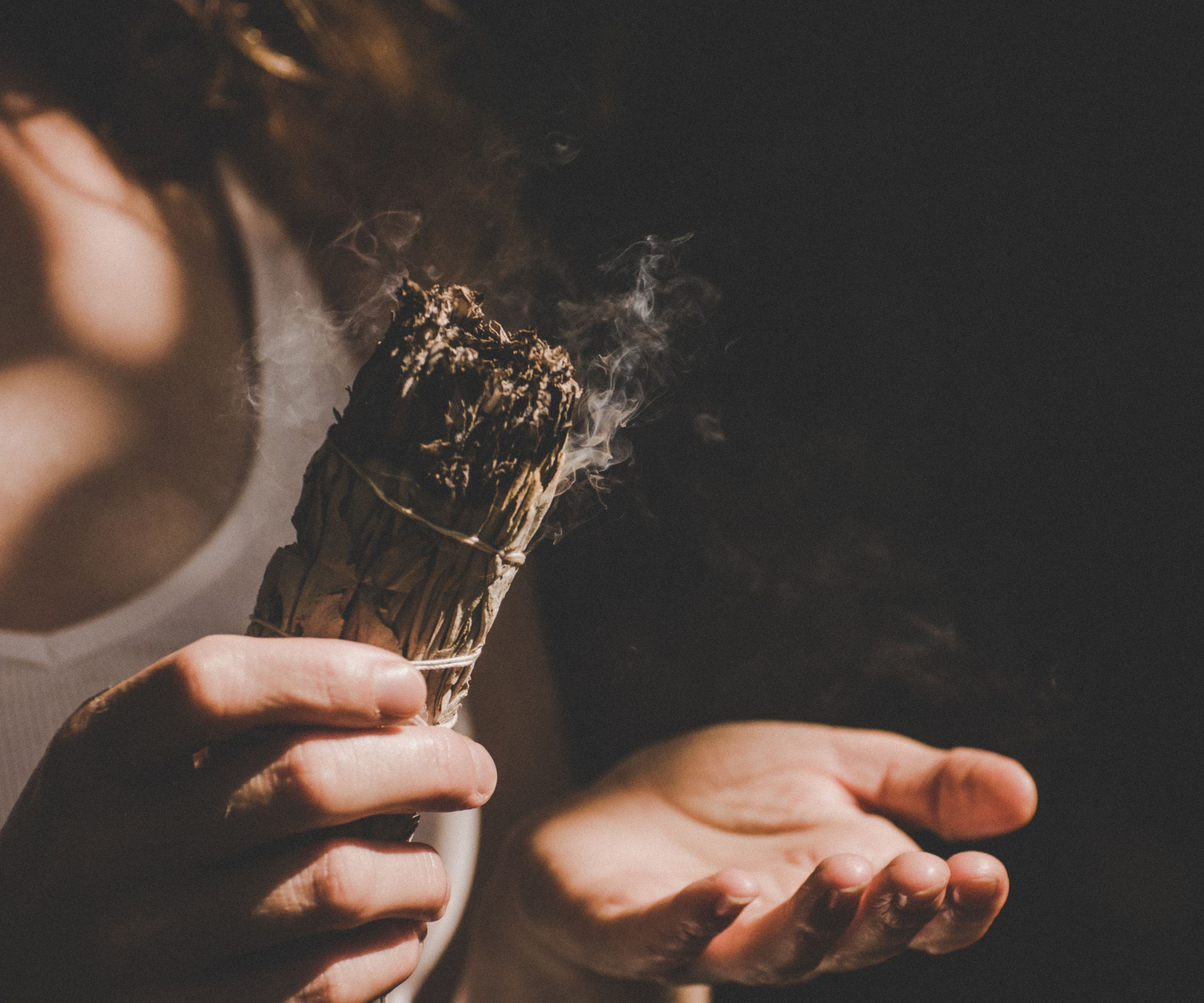How to cleanse a house with sage – an expert explains how this spiritual practice refreshes a space
Burning sage is believed to cleanse a space’s energy, here’s how to do it


The practice of burning sage has been around for hundreds of years and has been used when moving into new homes and after periods of illness to help cleanse negative energies. But what does it entail, and how do you do it safely?
If you are at all familiar with the meaning of Feng Shui and the importance it places on balancing energies, the process of burning sage for ‘spiritual hygiene’ is a good next step in perfecting your home's Chi, experts claim.
Here, Feng Shui expert, spiritualist, and founder of Simply Shui Amanda Gibby Peters explains how to cleanse a house with sage, and why it may be beneficial to you.

Amanda is a Feng Shui practitioner and author of Simple Feng Shui for Every Day, at Amazon. She has been teaching Feng Shui techniques and tips for over a decade, witnessing the amazing life transformations of readers and clients alike.
How to cleanse a house with sage
Burning sage is one of the oldest methods of performing a Feng Shui home energy cleanse in a space and ridding it of unwanted energies and spirits. The practice is, in fact, prehistoric and is believed to help in creating good Feng Shui in your home, and, along with sprinkling rice around homes, is thought to be the one method available to us when we need to 'clear the air' of unwanted energy, Amanda Gibby Peters explains.
‘Working with sage returns a space to balance and creates an “energetic” room for something positive to fill its space.’
It is worth noting that burning sage is also a cultural practice, and so it should be done with reverence to its history and with intention.
Burn the right sage

The sage you use to cleanse your house is not the same as you might add to your dinner, Amanda explains. The best sage to buy for burning is white sage, but there are plenty of other more environmentally conscious alternatives.
Design expertise in your inbox – from inspiring decorating ideas and beautiful celebrity homes to practical gardening advice and shopping round-ups.
‘White sage is the most common; however, since it is over-harvested, be deliberate in sourcing and purchasing from indigenous communities and reputable growers,’ she says.
‘Also, instead of purchasing wands, try loose-leaf sage,’ she adds. ‘This way, you can work with what you need and there is no waste. I also encourage my clients and students to mix in other plant medicine – like rose petals, basil, cloves, rosemary, lavender, or pine. Not only do they each contribute their own “healing” notes, but they are also not environmentally endangered.’
Sage Floral Mix Blend | $15.99 at Etsy
This sage jar contains California White Sage, Eucalyptus, Chamomile, & Rosemary and comes with a free abalone shell for burning
How to burn sage safely

Unlike lighting your best candle or burning incense, burning a bundle of herbs proves a more potent fire risk if done incorrectly.
‘You will need a fire-proof container, a lighter / match, a bowl of water, and the sage,’ Amanda begins. ’If you are working with a sage smoke stick, break the stick open some at the top before lighting it. This way, oxygen will circulate your flame. Once you have a good smolder, blow out the flame and you should stay smoky. I carry mine in a fire-proof container as I walk through a home or cleanse an item.
‘Typically, people simply light the stick, but it doesn’t stay lit, so they need to re-light it several times. This is why breaking it open can help! If you are working with loose leaves, put a small handful of sage in your fire-proof container, light it and the pile should begin to smolder.
‘In either situation, open a few windows so the air can circulate,’ Amanda adds. ‘Not only does this create an easy passage for lingering energy to move on, but it also keeps the air inside from feeling too heavy. When working with sage, if the space is not well-ventilated, it can have a cloying effect and the "results" aren't as refreshing.’
7 pack Smudge Wand Sampler | $15.99 at Etsy
This set consists of White Sage, Blue Sage, Rosemary, Juniper, Yerba Santa, Common Sage, and three Palo Santo Smudging Sticks making it ideal for beginners
The benefits of burning sage

Like blowing cinnamon on front doors, sage is most commonly burned in a new home, but are a few reasons why you may want to burn sage in your space, Amanda Gibby Peters continues. ‘Burning sage in a new space helps to clear its predecessor's energy.
‘You may also want to burn sage if you’re going through a big life change to help give you an energetic lift, if you have experienced conflict lately or are craving a fresh start.
‘Burning sage around something you have acquired secondhand can also lift negative energies and give it a fresh start in your home,’ she adds.
It is good to note that burning sage will not help to fix the source of bad energies, however, if you also need to fix your home's flow for Feng Shui. Learning good Feng Shui furniture placement is thought to help to banish bad energies for good.
FAQs
What is smudging?
Smudging is another name for burning herbs to cleanse a house. Most often, smudging involves burning sage, but it can also involve burning other spiritually medicinal herbs such as sweetgrass and cedar to help cleanse a space’s energy after moving in, or after an illness.
What is sage used for spiritually?
Sage is often used in a very spiritual way to get rid of negative energy and restore harmony in a new space such as a new home. Often, burning sage, or smudging, is done whenever you are completing a deep clean of your home too, to help refresh the energies of the space as well as the upholstery and surfaces.

Chiana has been at Homes & Gardens for two years and is our resident 'queen' of non-toxic living. She spends most of her time producing content for the Solved section of the website, helping readers get the most out of their homes through clever decluttering, cleaning, and tidying tips. She was named one of Fixr's top home improvement journalists in 2024.

